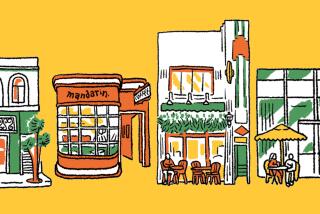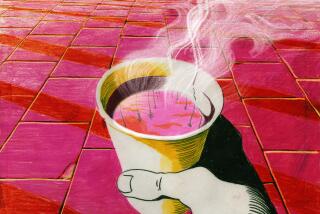The Coffee Revolution : Quick Guide to Coffee Varieties
- Share via
Impress your friends! This is how the experts describe the beans from coffee growing areas around the world.
THE AMERICAS: medium body, lively acidity, floral flavors, good balance.
* Brazil: mostly neutral coffee for blending purposes, but better coffees have more distinctive qualities of low acidity, clove and allspice aromas.
* Colombia: good acidity, medium body, caramelly aroma, consistent quality.
* Costa Rica: well balanced (“in my opinion, almost too good,” writes Tim Castle; “prissily balanced and sweetly smooth, like a pretty face”).
* Cuba: flat, suitable for dark roasts.
* El Salvador: mostly used in blends, particularly to add interest to espresso.
* Guatemala: acid, heavy body, well balanced, has a subtle smokiness.
* Haiti: casually grown and variable in quality; rarely seen.
* Hawaii: Kona plantations started with imported Central American coffee plants; typical Central American flavors.
* Honduras: blending coffee.
* Jamaican: famous for coffee from the Blue Mountain plantation, which is possibly the most over-rated--and certainly the most falsified--in the world.
* Mexico: medium acidity, smooth body, hazelnut aroma.
* Nicaragua: mostly a blending coffee, but with some distinctive plantations.
* Panama: heavy body, good acidity, mild flavor.
* Venezuela: blending coffee.
INDONESIAN FAMILY: full body, low acidity, earthy and exotic flavors.
* India: very low acidity, cinnamon and cedar aroma.
* Java: spicy and strong flavor.
* Sumatra: very full body, earthy and even musty quality.
* Sulawesi: very low acidity, earthy aroma.
* Papua New Guinea: rich flavor, good balance.
AFRICAN FAMILY: medium-full body, lively acidity, winy and floral flavors.
* Ethiopia: inconsistent quality because beans are still gathered from wild trees; also much falsification of the premium Harrar designation; wild, earthy and spicy flavors.
* Kenya: intense, acidic, floral, winy.
* Yemen: bitter, winy, cherry and incense aromas; most of what is sold as Yemen is actually Ethiopian.
* Zaire: mostly robustas, some well-balanced arabicas.
* Zambia: like Kenya but with more body and wininess.
More to Read
Eat your way across L.A.
Get our weekly Tasting Notes newsletter for reviews, news and more.
You may occasionally receive promotional content from the Los Angeles Times.










